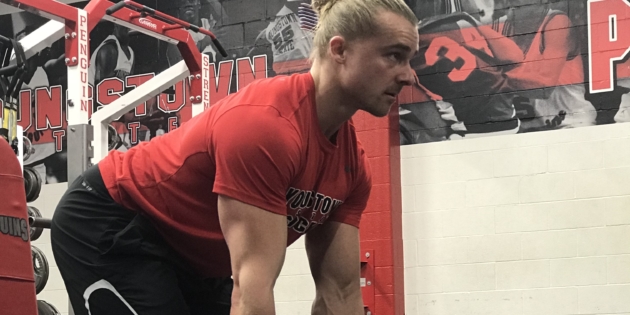- Post-Activation Potentiation (PAP): Do we need to use general fitness means (linear sprints, jumps, med ball throws) or can we execute a few short, maximal effort football, basketball, tennis, etc. game scenarios? The latter would be better because game technique and tactics would be used.
- We can’t use training means from ‘back in the day’ because nowadays, if you destroy an athlete through training, they may not auto-regulate sleep/rest/nutrition (like the human body should do) because of technology (social media, artificial lighting, nutrition-deficient foods, etc.) – things that weren’t a hindrance to our body’s auto-regulatory ability in the past.
- Mirror drill: How long, in sport, will an athlete be reacting to an opponent in this fashion? In sports like basketball, football, etc. – probably 1 second or less. So if we mirror drill for 5 seconds, this doesn’t accurately represent sport-specific perception and action.
- Progressions and Regressions: We have them for every exercise yet this is not how learning occurs. It is not a linear process. If coaches have seen it work with the squat, hip hinge, press, pull, etc. this is probably because these exercises are very simple to teach – anything works. You don’t need a list of progressions and regressions. It’s mainly subjective anyway.
- Force Production: Justifying means because they involve ‘force production’ is not good enough. Why do we do A-skips? “To put force into the ground”. Why do we squat heavy? “To increase an athlete’s force production”. – If these are our justifications, why not just land from a six foot box or sprint as fast as possible? Plenty of force there.
- How often are athletes allowed to figure it out for themselves and how often are they coached? Athletes need to problem-solve in their sport, so maybe they should be coached less and given scenarios to find more solutions on their own.
- Young children develop resilience by falling, getting hit, jumping off things, etc. In S&C, if one of our goals is to make resilient athletes, why do we avoid things that are potentially injurious? Med ball tennis, ultimate Frisbee, spikeball, kickball, tag, etc. these provide athletes with countless movement opportunities, they introduce chaos into training, and they allow failures and corrections – why do we avoid these to lift weights and run tempo intervals?
- If we put high value on multi-sport athletes, why do we avoid practicing multiple sports/competing in different games when athletes get to the college level? The benefits on coordination, preventing overuse, avoiding burnout, etc. – wouldn’t these go away as an athlete specializes in one sport?
- Functional Range Conditioning: How is it that something with low velocity and low force ‘prepares’ athletes for high velocity and high force? This was something I read and I was like ‘wait, what?’…. massive amount of social media likes.
- Sports with a high amount of coach intervention/control: football, baseball. Sports with less coach intervention/control: basketball. Sports with even less intervention/control: rugby, soccer. Should this affect how technique is practiced with these given sports? A wide receiver can master linear sprint technique and use it on every play, but if a soccer player has went for 40 minutes straight, how much are A-Skips and 90-degree arm swings doing for them?
Thoughts 3



